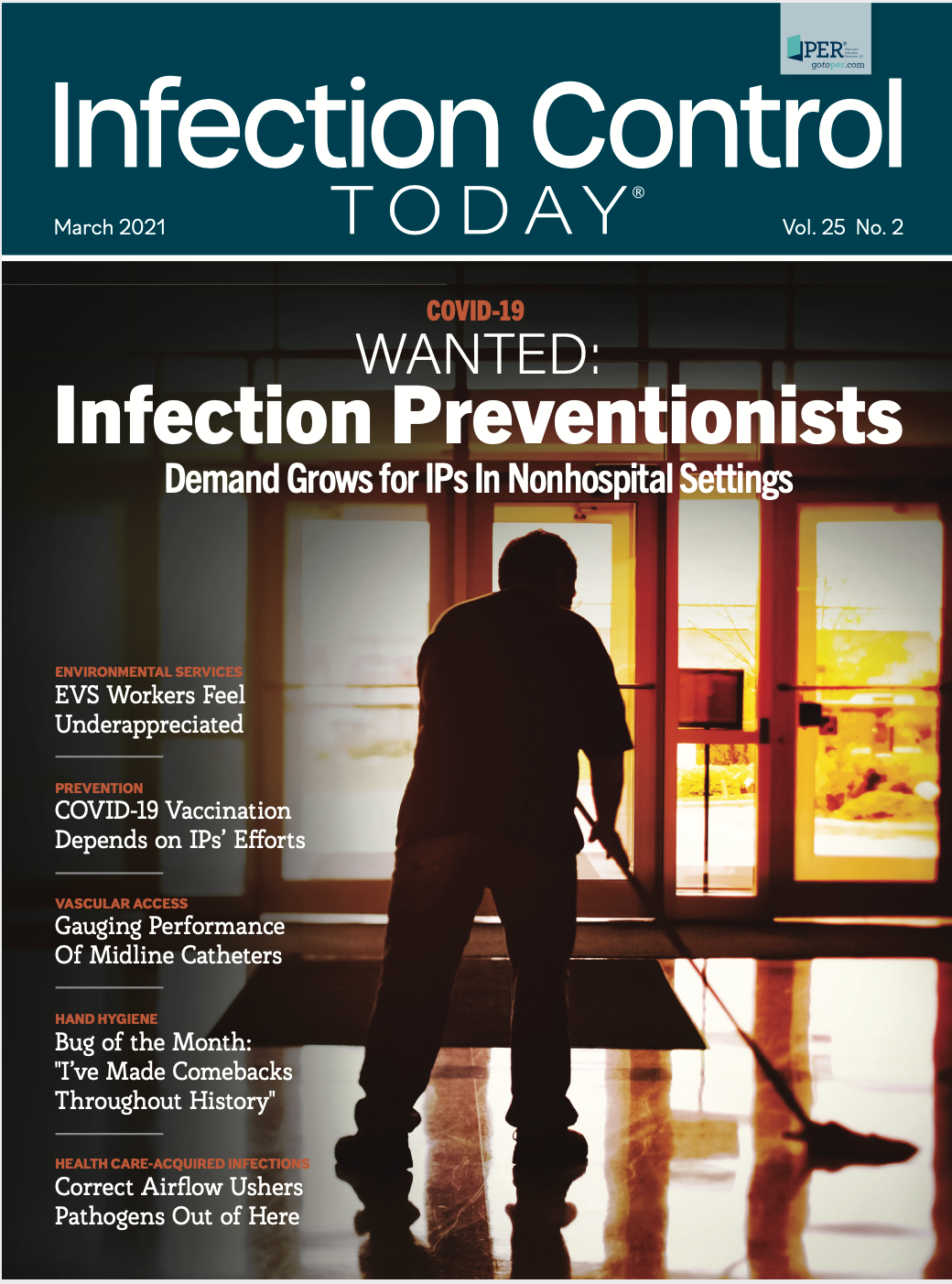Asymptomatic Carriers May Play a Huge Part in COVID-19 Surge
Assume that everybody in a hospital setting is an asymptomatic carrier of COVID-19, two recent studies suggest.
The winter of 2020-2021 can’t end soon enough for infection preventionists and other exhausted health care professionals battling coronavirus disease 2019 (COVID-19). It is a winter that has seen spikes in COVID-19 infections, hospitalizations, and deaths. Back in early November 2020, experts were telling Infection Control Today®that the public needed to greatly curtail their participation in social gatherings over the upcoming holidays. That might have happened to some extent, but not to the extent needed to avoid what has turned out to be one of the most brutal stretches in the history of US public health care.
Experts have also been telling ICT® for a long time that asymptomatic carriers make the disease particularly difficult to control. Linda Spaulding RN, BC, CIC, CHEC, warned her fellow infection preventionists back in April 2020.1 that they might become unknowing carriers of severe acute respiratory syndrome coronavirus 2 (SARS-CoV-2). “[We] could possibly give it to our coworkers and everybody we’re around and we’re never going to know we’re an asymptomatic carrier,” she said.
The role of asymptomatic carriers continues to be explored in 2 recent studies in the American Journal of Infection Control. In 1 of the studies, investigators with the University of Louisville in Kentucky found that 37% of patients presenting at a hospital are asymptomatic carriers of SARS-CoV-2.2 “The proportion of asymptomatic patients admitted with SARS-CoV-2 was significant,” the authors conclude. “Identifying and isolating asymptomatic patients likely prevented exposure and development of hospital-acquired COVID-19 cases among health care workers and other patients, supporting the universal surveillance of all admitted patients.”
In the other study, investigators with Autonomous University of Zacatecas in Mexico found that “34 (42%) contacts in the study were positive for SARS-CoV-2. Twenty-three (67.6%) manifested less than 2 respiratory symptoms, and 5 (14.7%) remained asymptomatic…The average of positive contacts by index COVID-19 case (R0) was 4.3 and the mean of time of positive COVID-19 test at sampling time was 18.9 days. Positive antibody test against SARS-CoV-2 was observed in 16% of the participants.”3
In the University of Louisville study, investigators collected data from patients who had tested positive for COVID-19 and were admitted from April 9 to July 1, 2020, to UofL Health, an acute care hospital in Louisville.
“All patients admitted to the hospital with positive SARS-CoV-2 RT-PCR tests were identified,” say the authors. “The patients who had COVID-19 symptoms on admission were analyzed separately from those who were asymptomatic.”
Of the 103 patients who tested positive for the coronavirus, 65 were symptomatic and 38 were asymptomatic. “The proportion of SARS-CoV-2 patients who were asymptomatic varied over the duration of the study, but trended up from 20% at the onset of the study period to 60% at the end,” the investigators write.
Assume that everybody in a hospital setting might be an asymptomatic carrier of COVID-19. This will better protect not only patients but infection preventionists and other health care workers as well.
“An important strategy to protect health care workers and other patients is to perform a surveillance test on all patients admitted to the hospital,” the University of Louisville investigators state. “In addition to surveillance testing for SARS-CoV-2, other strategies utilized were standard and transmission-based precautions, as well as universal masking of all staff.”
Investigators with the Autonomous University of Zacatecas found that respiratory symptoms alone might not be enough of an indicator to identify those infected with COVID-19. “The proportion of close contacts of COVID-19 patients infected with SARS-CoV-2 (42%) and with less than 2 or with no respiratory symptoms (82.4%) was high in the study population,” they say. “A low proportion of COVID-19 patients had a positive test for antibodies against SARS-CoV-2. The screening for SARS-CoV-2 in close contacts of COVID-19 positive patients should be encouraged to avoid spreading the infection and the expansion of the disease.”
The investigators examined data collected from 100 patients from June to July 2020. They found that 34 of the subjects tested positive for COVID-19, 23 of whom exhibited fewer than 2 respiratory symptoms whereas 5 were asymptomatic.
“The proportion of close contacts of COVID-19 patients infected with SARS-CoV-2 (42%) and with less than 2 or with no respiratory symptoms (82.4%) was high in the study population,” the investigators write. “A low proportion of COVID-19 patients had a positive test for antibodies against SARS-CoV-2. The screening for SARS-CoV-2 in close contacts of COVID-19 positive patients should be encouraged to avoid spreading the infection and the expansion of the disease.”
References:
- Diamond F. A Q&A with Linda Spaulding on the frontlines of COVID-19. Infection Control Today®. April 15, 2020. https://www.infectioncontroltoday.com/view/qa-linda-spaulding-frontlines-covid-19
- Arnold FW, Bishop S, Oppy L, Scott L, Stevenson G. Surveillance testing reveals a significant proportion of hospitalized patients with SARS-CoV-2 are asymptomatic. Am J Infect Control. Published online January 8, 2021. doi.10.1016/j.ajic.2021.01.005
- Martinez-Fierro ML, Ríos-Jasso J, Garza-Veloz I, et al. The role of close contacts of COVID-19 patients in the SARS-CoV-2 transmission: an emphasis on the percentage of nonevaluated positivity in Mexico. Am J Infect Control. 2021;49(1):15-20. doi.10.1016/j.ajic.2020.10.002
